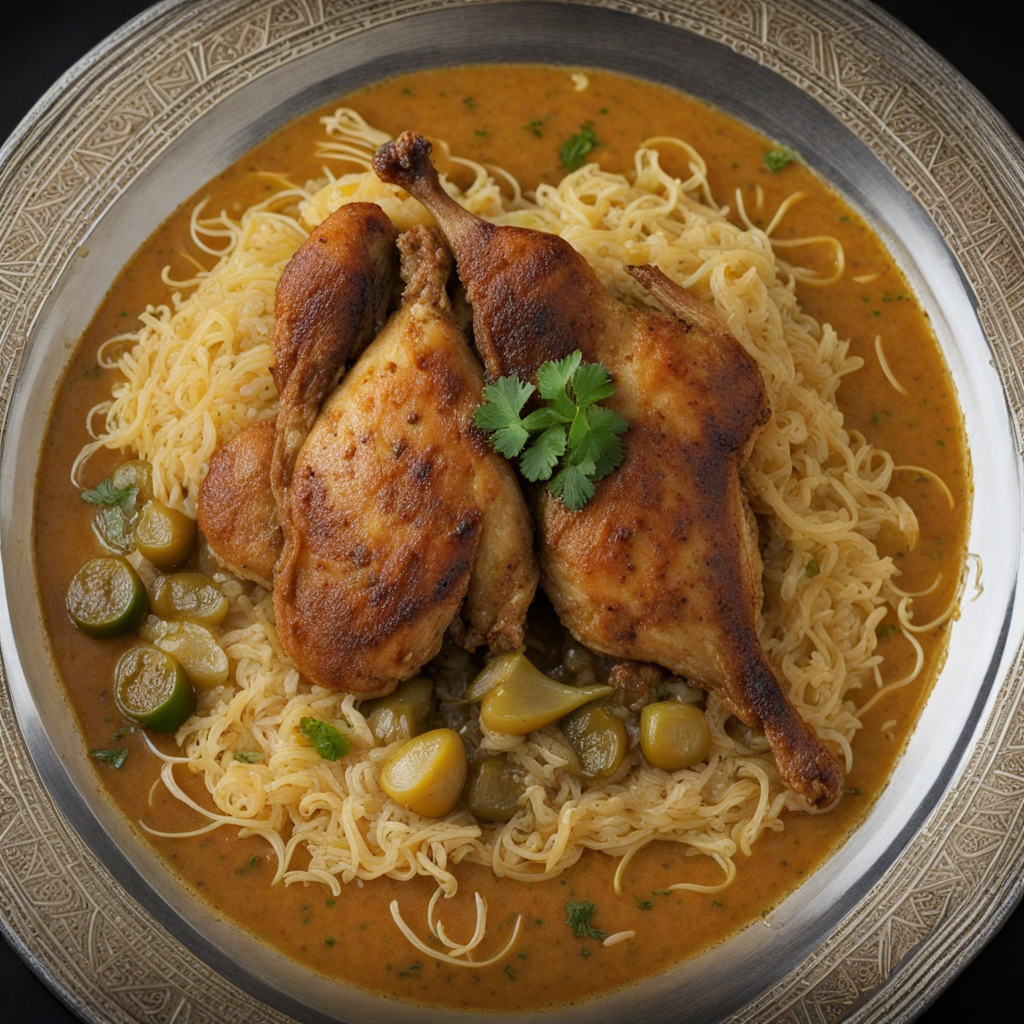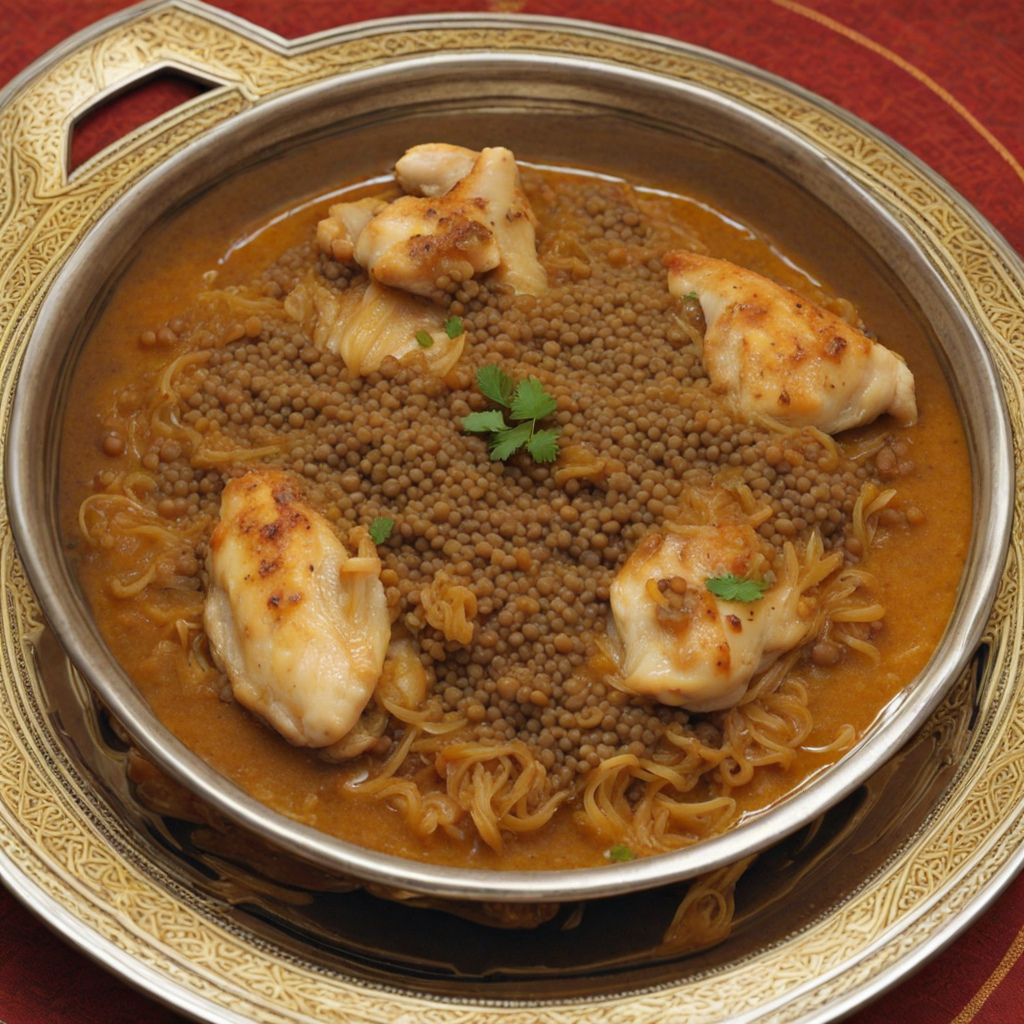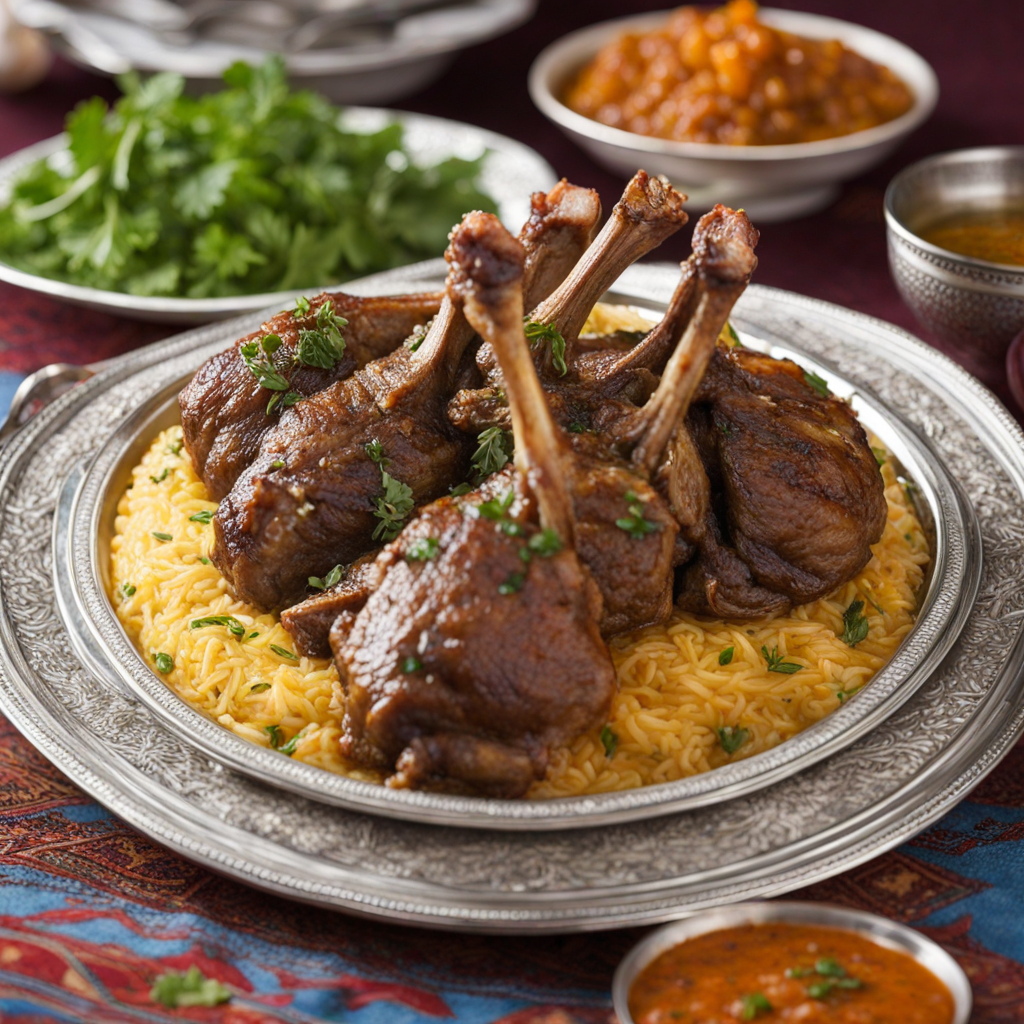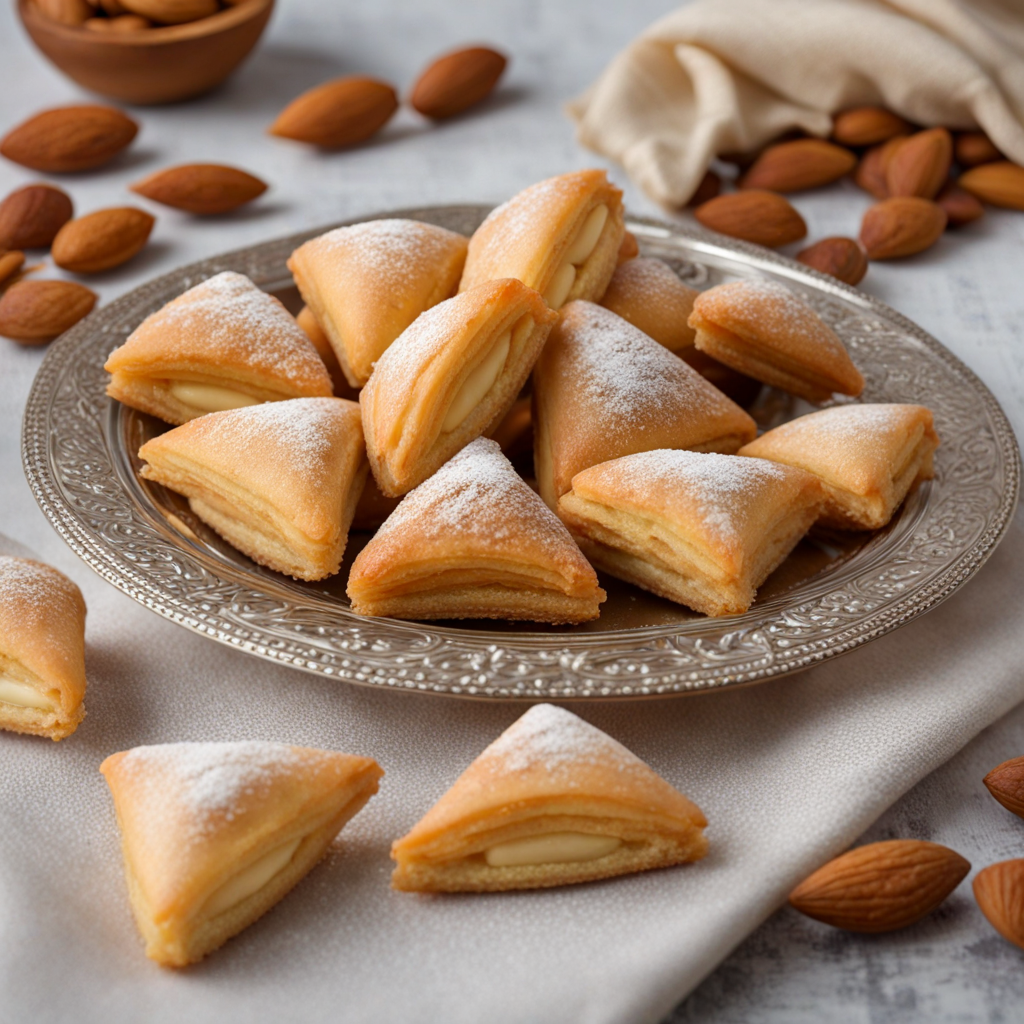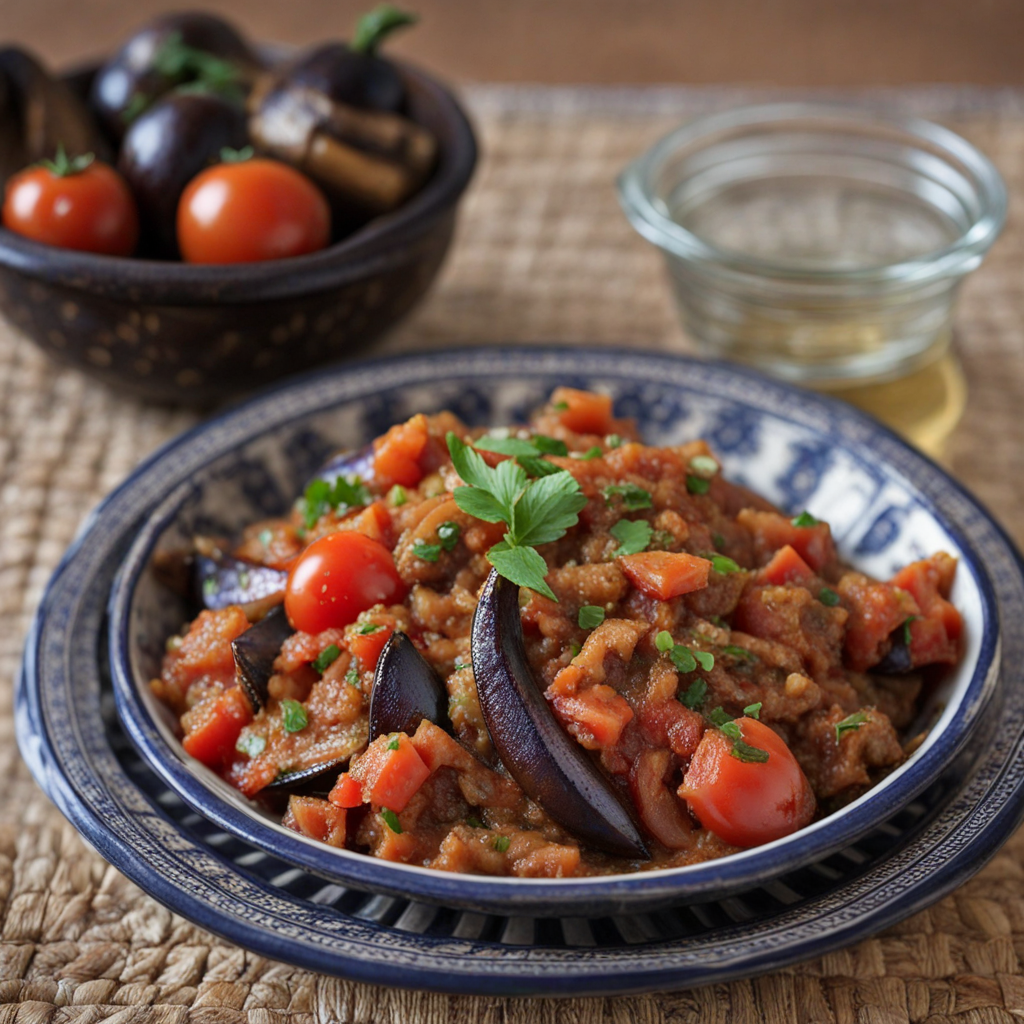Rfissa
Rfissa is a traditional Moroccan dish that showcases the rich culinary heritage of the region, combining flavors and textures that are both comforting and aromatic. At its heart, Rfissa features tender, slow-cooked chicken, often flavored with a blend of spices like saffron, ginger, and cinnamon, which infuse the meat with a warm, fragrant essence. The chicken is typically served atop a bed of thin, flaky msemen or a similar type of flatbread, which soaks up the delicious sauce, making each bite a delightful experience. What sets Rfissa apart is the unique approach to its preparation, where the dish is often enriched with a lentil and fenugreek mixture, adding depth and a slightly earthy flavor. The use of fenugreek is particularly notable, as it contributes a subtle bitterness that balances the sweetness from the spices. The dish is traditionally served during special occasions, such as celebrations or family gatherings, making it a heartfelt meal that brings people together. To enjoy Rfissa is to appreciate the layers of Moroccan culture and tradition encapsulated in one comforting bowl. The combination of spices, the tender chicken, and the soft bread create a symphony of flavors that dance on the palate. Each serving is often a communal experience, where diners dig in together, showcasing the Moroccan spirit of sharing and hospitality, making Rfissa not just a meal, but a celebration of togetherness.
How It Became This Dish
The Rich History of رفيسة (Rfissa) in Morocco Rfissa is a traditional Moroccan dish that embodies the country's rich culinary heritage, offering a unique blend of flavors and cultural significance. This aromatic dish, typically prepared for special occasions, is rooted in the history of Moroccan gastronomy and illustrates the intricate relationship between food and community in Moroccan society. #### Origins of Rfissa The origins of rfissa can be traced back to the Berber people of Morocco, the indigenous population of the region. The dish is primarily associated with the celebration of the arrival of a newborn, as it is often served during postpartum gatherings to honor the mother and her family. The use of ingredients such as lentils, chicken, and spices reflects the agricultural practices and local resources available to the Berber communities. The name "rfissa" derives from the Arabic word "رفس," which means "to scatter" or "to break into pieces." This refers to the dish's preparation method, where flatbreads, known as "msemmen" or "rfissa bread," are torn into pieces and layered with a flavorful sauce. The dish’s rich combination of spices, including saffron, cumin, and coriander, reflects the historical influence of trade routes that passed through Morocco, connecting it to various cultures and cuisines. #### Cultural Significance Rfissa holds a special place in Moroccan culture, symbolizing hospitality and community bonding. It is traditionally served during significant life events such as weddings, religious celebrations, and, most notably, the birth of a child. In Moroccan society, food plays a crucial role in bringing people together, and rfissa serves as a centerpiece in communal feasts. The preparation of rfissa is often a communal activity, involving the extended family and close friends. The act of cooking together fosters a sense of unity and reinforces social ties. In this way, rfissa transcends its role as mere sustenance, becoming a vehicle for cultural expression and familial love. The dish is often accompanied by stories and laughter, creating cherished memories that are passed down through generations. #### Ingredients and Preparation The primary ingredients of rfissa include chicken, lentils, and a variety of spices, along with the signature flatbread. The chicken is usually simmered with onions, garlic, and a blend of spices, creating a savory sauce that infuses the dish with warmth and depth. The lentils add a nutritious element, while the spices—particularly saffron—contribute not only to the flavor but also to the vibrant color of the dish. The preparation of rfissa begins with the making of the flatbread. Traditionally, this bread is prepared by mixing flour, water, and a pinch of salt to form a dough. Once kneaded, the dough is rolled out and cooked on a flat surface until golden and slightly crispy. The cooked bread is then torn into pieces and layered at the bottom of a large serving dish. Next, the chicken and lentils are cooked together, allowing the flavors to meld. Once the chicken is tender, the mixture is poured over the torn flatbread. The dish is often garnished with additional spices and served hot, allowing the bread to soak up the savory sauce. #### Historical Development Over the centuries, rfissa has evolved alongside Morocco's diverse cultural influences. The spice trade, which flourished during the medieval period, introduced new flavors and ingredients to Moroccan cuisine. The incorporation of exotic spices into rfissa reflects this historical exchange, creating a dish that is distinctly Moroccan yet influenced by global culinary practices. In addition to spices, the introduction of new cooking techniques has also played a role in the development of rfissa. The influence of Andalusian cuisine, brought to Morocco during the Reconquista, introduced new methods of food preparation and presentation. This melding of culinary traditions has enriched rfissa, making it a dynamic and evolving dish that continues to adapt to contemporary tastes while honoring its historical roots. In modern times, rfissa has gained recognition beyond Moroccan borders, often served in Moroccan restaurants worldwide. This globalization of the dish has introduced it to new audiences, allowing for variations in preparation and presentation. However, despite these adaptations, the essence of rfissa remains intact—a dish that celebrates community, hospitality, and tradition. #### Contemporary Relevance Today, rfissa is not only a staple during celebrations but also a dish that reflects the everyday life of Moroccans. While it may be reserved for special occasions, many families prepare it regularly as a reminder of their cultural heritage. The dish serves as a culinary bridge between generations, with recipes often passed down from mothers to daughters, preserving the art of traditional Moroccan cooking. Moreover, the increasing interest in global cuisines has led to a resurgence of traditional Moroccan dishes like rfissa. Chefs and home cooks alike are revisiting ancient recipes, emphasizing the importance of local ingredients and traditional cooking methods. This revival has sparked a renewed appreciation for the cultural significance of rfissa, encouraging individuals to explore and celebrate their culinary heritage. In recent years, initiatives aimed at promoting Moroccan cuisine globally have further enhanced the visibility of rfissa. Cooking classes, food festivals, and culinary tours often highlight this traditional dish as a quintessential representation of Moroccan food culture. As a result, rfissa has transcended its humble beginnings to become a symbol of Moroccan identity on the international culinary stage. #### Conclusion Rfissa is more than just a dish; it is a celebration of Moroccan culture and community. Its origins in Berber traditions, combined with the influences of various culinary practices over time, create a rich tapestry of flavors and meanings. As it continues to evolve and adapt in contemporary society, rfissa remains a vital link to the past, a source of pride for Moroccans, and a delicious embodiment of the country’s vibrant culinary heritage. Whether served at a family gathering or a festive celebration, rfissa exemplifies the warmth of Moroccan hospitality and the enduring power of food to bring people together.
You may like
Discover local flavors from Morocco


